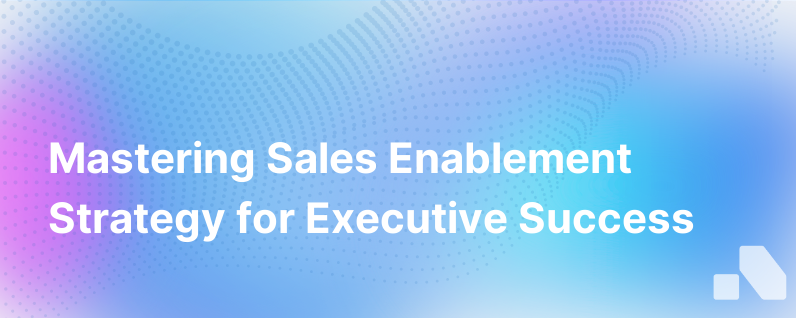
It’s no secret that the B2B sales landscape continues to grow more complex. Increasingly sophisticated buyers demand tailored solutions, not generic pitches. In this scenario, executing a successful sales enablement strategy becomes even more critical for businesses to remain competitive and stay ahead of the curve.
But what is Sales Enablement? It’s the strategic, cross-functional discipline designed to increase sales results and productivity by providing integrated content, training and coaching services for salespeople and frontline sales managers along the entire buyer's journey, powered by technology. As such, effective implementation of your sales enablement strategy is a game-changer, particularly for B2B sales organizations selling complex solutions. Let's explore this in depth.
Assessing Your Current Enablement State
Understanding your current state is the first step towards creating an effective sales enablement strategy. Essentially, you should identify the answers to the following questions:
- Do you have a formalized sales process that is aligned with the buyer's journey?
- Is there a standard onboarding process and continuous training for your salespeople?
- Is your sales content optimized, relevant, and easily accessible?
- Are your sales technologies integrated and customized to your sales process?
- Are your sales enablement efforts measured and optimized regularly?
If the answer to any of these questions is no, it’s clear that your organization needs to adopt an optimized sales enablement strategy.
Constructing a Sales Enablement Strategy
Below are the steps to build an effective sales enablement strategy:
1. Align Your Stakeholders: Sales enablement is a cross-functional discipline; therefore, it requires participation and alignment from different departments in your organization. Marketers, trainers, customer service reps, sales managers, and executives all have a role in designing and executing your sales enablement strategy.
2. Formalize Your Sales Process: Your sales process should be mapped to your customer's buying process. Clearly define each stage, what actions should take place, and what the desired outcomes are. Be prepared to make adjustments over time as you learn more about your customers.
3. Train and Develop Your Sales Team: Training shouldn't stop after onboarding. Invest in the continuous development of your sales team and tailor it to individual needs. Remember that training should not only focus on selling skills but also product knowledge, market trends, and customer insights.
4. Optimize Your Sales Content: A pile of assorted sales decks, case studies, and scripts will not help your sales team close deals. Content should be organized, up-to-date, and easily accessible. It should also be custom-tailored to fit each stage of the buyer's journey and personalized to each customer's needs.
5. Implement the Right Technology: Sales enablement technology can make all the difference. The right tools can make it easier for your sales reps to find the right content, track customer engagement, execute sales playbooks, and much more. They can also provide data and insights to help you continuously optimize your strategy.
6. Measure and Optimize: Finally, don't let your sales enablement strategy become static. Always measure your results and consistently look for areas of improvement.
Overcoming Sales Enablement Challenges with Aomni
While building and implementing a sales enablement strategy is crucial to any modern sales organization, it can be challenging. Common pain points include decentralization of sales content, lack of personalized training, and lack of integration among different sales tools.
At Aomni, we provide an AI-driven platform that simplifies sales enablement. Our integrated platform provides real-time account research, actionable competitive insights, and personalized sales content, turning around all of it in as little as 15 minutes. With minimal effort, you can keep your sales enablement strategy aligned and optimized.
Conclusion
An effective sales enablement strategy can exponentially increase your sales productivity and effectiveness, leading to more closed deals, shorter sales cycles, and happier customers. By following the steps outlined, you can ensure that your sales enablement approach is strategic, professional, and continuously optimized for success. Remember, the foundation of sales enablement lies in understanding your buyers, empowering your salespeople, and consistently fine-tuning your approach.